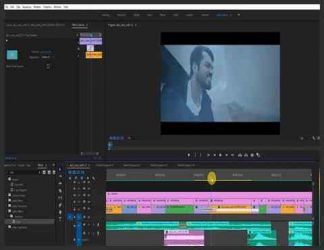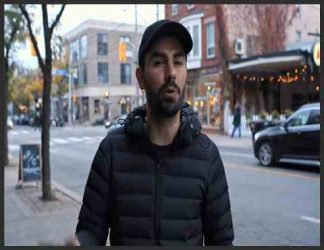You must need to login..!
توضیح
بهبود عکاسی پرتره در فضای باز با (High Speed Sync (HSS
برای دانلود رایگان بهبود عکاسی پرتره در فضای باز با (High Speed Sync (HSS با کیفیت full hd 1080p از پلیر سایت یا لینک زیر استفاده کنین
لینک دانلود link download
مدرس دانشگاه من ادعا می کرد که یک عکاس خوب می تواند توده ذغال سنگ را با استفاده ماهرانه از نورپردازی جذاب کند. من هرگز نیازی به اثبات نقطه او احساس نکردم ، اما دهه های بعدی من در پشت لنز من را متقاعد کرده است که او درست است. حتی گراند کانیون می تواند در زیر نور خاکستری مسطح یک روز پوشیده از آب بی نظیر به نظر برسد ، در حالی که نمایی از برخی از مزارع مسطح اسکس را می توان با نور تحریک آمیز سپیده به یک چشم انداز نفس گیر تبدیل کرد. نور مواد اولیه ما است؛ بلوک ساختمانی که تصاویر ما را می سازد یا می شکند. در حقیقت ، نورپردازی برای تصویر نهایی آنقدر مهم است که اغلب احساس می کنم بیشتر از سوژه نور را عکاسی می کنم.
ما عکاسان باید نور را ببینند ، و منظورم این است که واقعاً آن را ببینیم ، آن را احساس کنیم و آن را در تمام اشکال و ظرافت های بی پایان آن درک کنیم. هنگام در نظر داشتن صحنه ای ، اولین کاری که باید انجام دهید این است که توجه کنید که نور از کجا می آید. و فراتر از دیدن آنچه که اکنون اتفاق می افتد ، باید پیش بینی نوری را انجام دهیم که به بهترین نحو تصویری را که در زمان های مختلف روز و سال در ذهن داریم ، روشن می کند. پیش بینی آنچه در نور ممکن است در عرض چند دقیقه اتفاق بیفتد ، یک ساعت بعد ، در همان روز ، صبح روز بعد ، در چند ماه یا سال آینده یک مهارت عکاسی اساسی است. این تجربه همراه است و محصول هر هوشیاری عکاسی ، تولیدی یا غیره است. ایستادن در کنار سه پایه در هنگام تماشای رنگ نور ، منظره هرگز تلف نمی شود.
گزینه های زمان آشکار داریم – نور روز ، سپیده دم ، غروب یا شب. فراتر از آنهایی که ما باید جنبه جهت را در نظر بگیریم. آیا ما می خواهیم چراغ اصلی از قسمت جلویی ، پشتی ، سمت یا بالای موضوع یا یک ترکیب باشد؟ سپس ماهیت و کیفیت رنگ نور وجود دارد: زیاد یا کم ، سخت یا نرم ، گرم یا سرد؟ در حقیقت ، بیشتر اوضاع روشنایی در دنیای طبیعی تلفیقی ظریف است و جابجایی ها بی پایان هستند.
My college lecturer used to assert that a good photographer could make a lump of coal look appealing with the skilful use of lighting. I never felt the need to prove his point, but my subsequent decades behind the lens have convinced me he was right. Even the Grand Canyon can look uninspiring under the flat grey light of an overcast day, whilst a view of some flat Essex fields can be transformed into a breathtaking vision by evocative dawn light. Light is our raw material; the building block that makes or breaks our pictures. In fact, lighting is so important to the finished image that I often feel I photograph the light more than the subject.
We photographers need to see the light, and I mean really see it, feel it and understand it in all its endless forms and subtleties. When contemplating a scene the first thing to do is consider where the light is coming from. And beyond seeing what is happening now we need to predict the light that will best illuminate the picture we have in mind at different times of the day and year. Anticipating what could happen with the light in a few minutes, an hour, later the same day, the next morning, in
a few months or next year is a fundamental photographic skill. It comes with experience and is the product of every photographic vigil, productive or otherwise. Standing by the tripod watching the light paint a landscape is never time wasted.
We have the obvious time options – daylight, dawn, dusk or night. Beyond those we have the directional aspect to consider; do we want the main light to come from the front, back, side or above the subject, or a combination? Then there’s the nature and colour quality of the light: high or low, hard or soft, warm or cool? In truth, most lighting situations in the natural world are a subtle fusion, and the permutations are endless.















